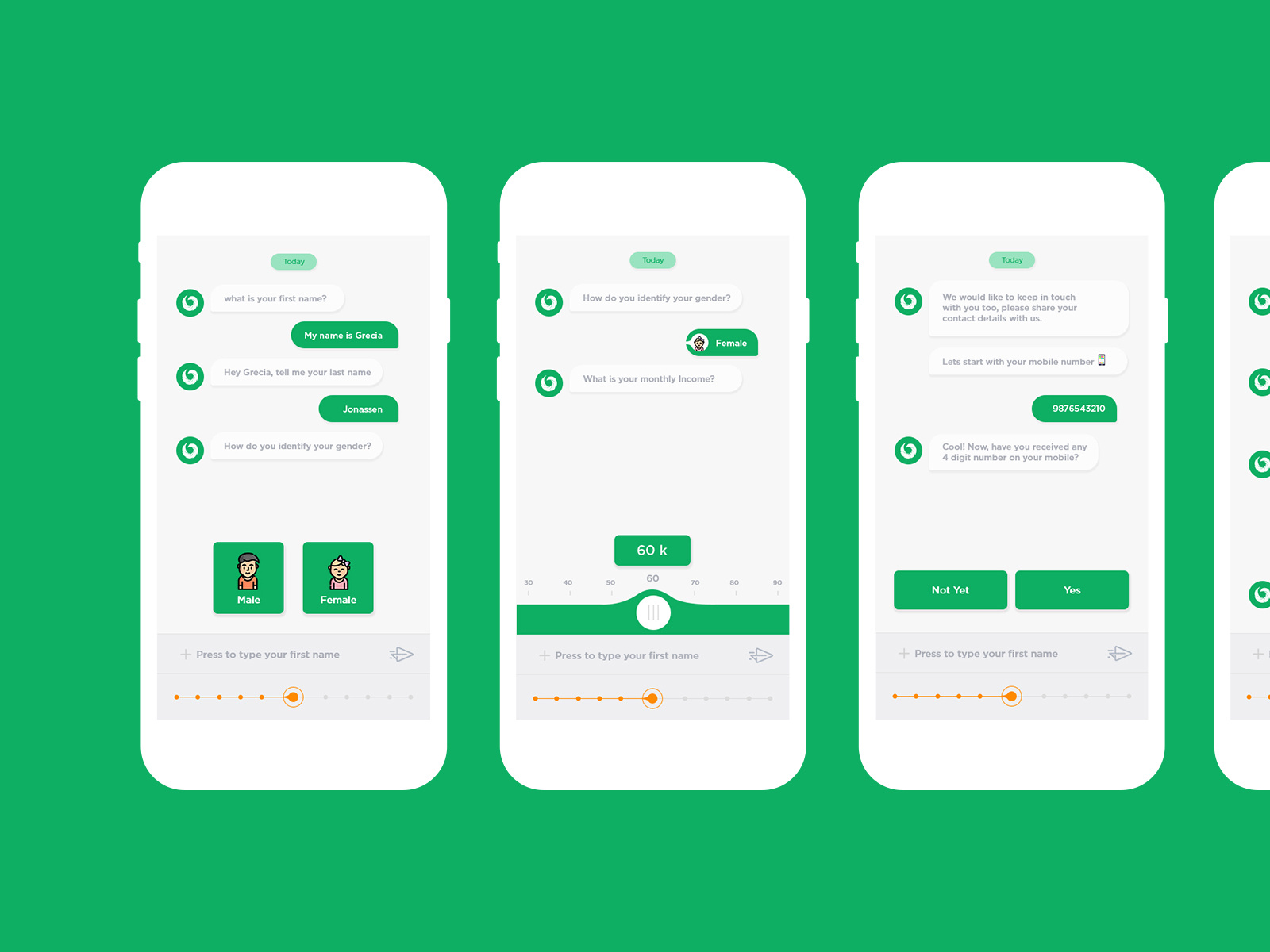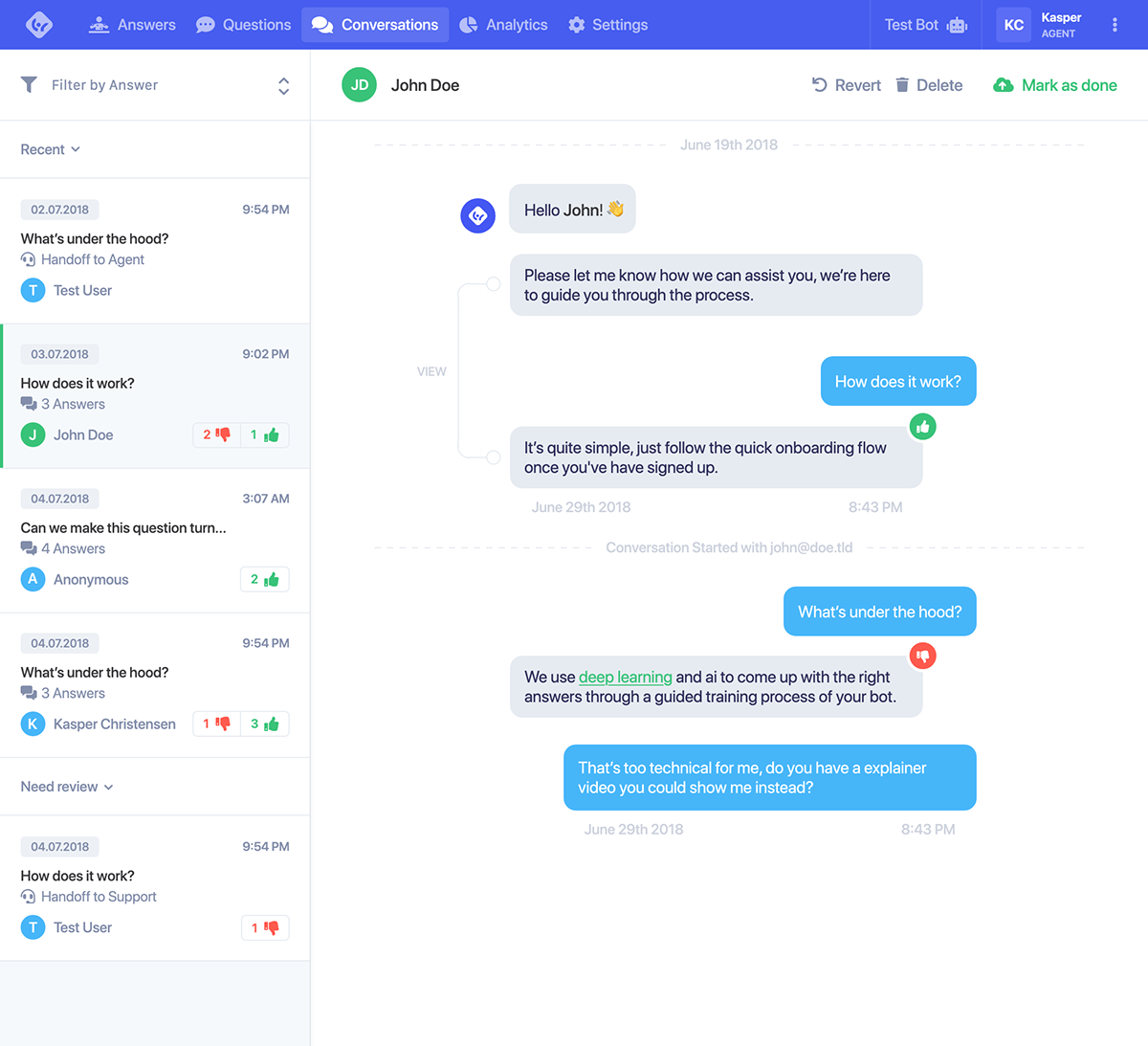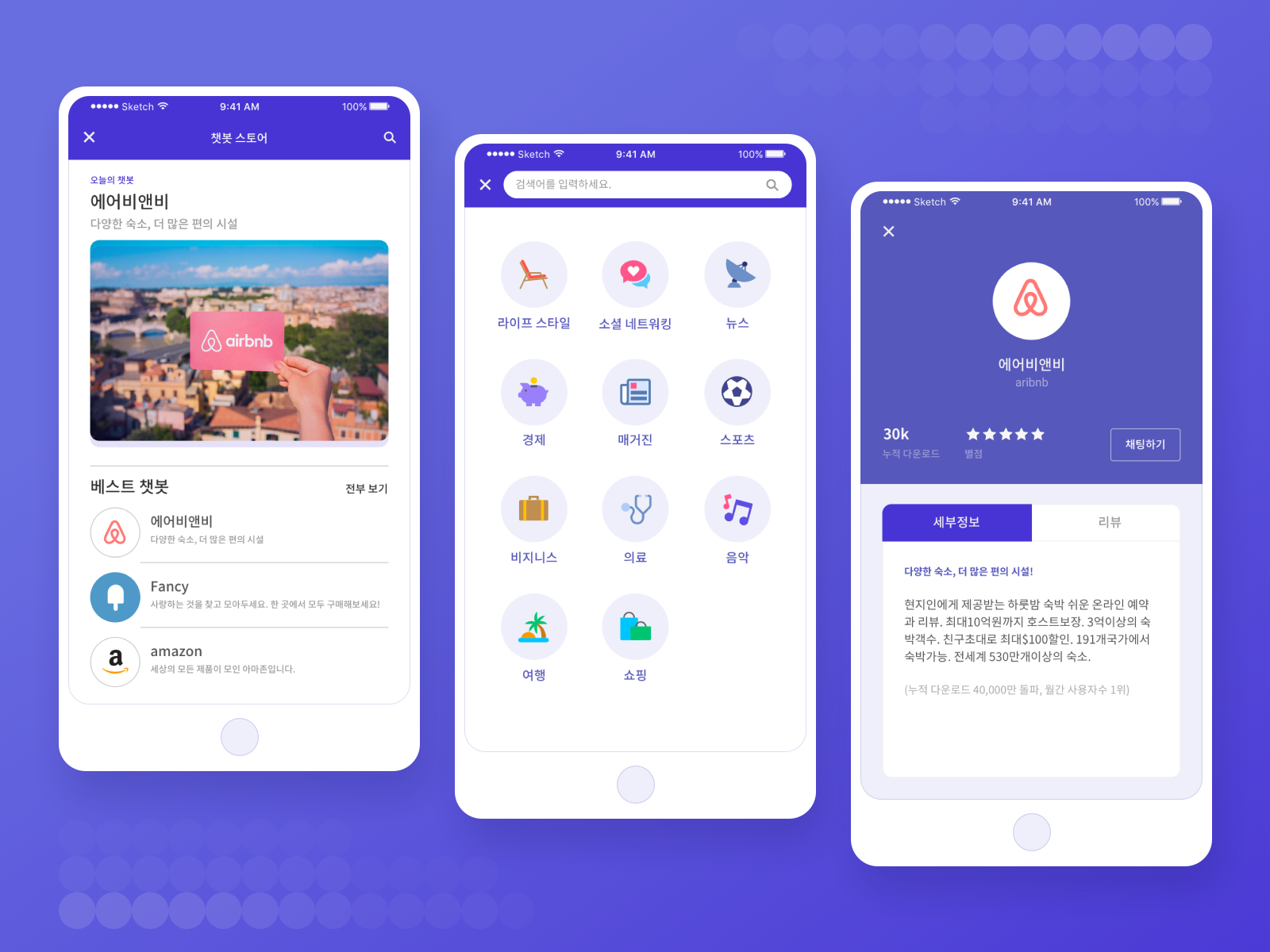

Can you decide which one is more natural and sounds like a conversation? If you can’t decide visit my Soundcloud to hear both the scripts out in audio. Repeat above steps with different user persona and your chatbot’s key use caseīelow are two sample scripts I have written. Convert the chatbot text message into speech (TTS), if it doesn’t sound good, rewrite it or use Speech Synthesis Markup Language (SSML)Ĥ. Read the script aloud & record the conversation with a partner (switch roles by yourself if you don’t find one)ģ. Write a sample dialog between user persona and chatbot personaĢ.
#Chatbot design how to
View this to learn how to write sample dialogs- ġ.
#Chatbot design download
You can download the excel and play around with it to write dialogs between user persona and your chatbot persona. While researching about chatbot script writing, I have found this excel template by Hilary Black t.ly/1szv. This will work both for Text based chatbot which uses Decision Tree Logic and VUI chatbot which uses NLP in background. There are many tutorials online which teaches how to write script for chatbots. Start with writing dialogs for a short flow and see whether than sounds natural. Effective conversation is natural, directional and clear. Think outside of the box as you are going to play the role of a screenplay writer. It means we have covered most of the scenarios. It is okay if the flow map is complicated looking.

Below is a sample diagram for how the flow map looks like in a conversation design. Like how design information architecture for an app or website, similarly in conversation design we have to start the process of it by creating flow maps or flow charts. While drafting flows for the bot you may find new ways to be added to the flow to make the conversation sound natural. Try writing all the use cases and that your bot will end to reach to its goal and user can get the job done. Like how a natural human conversation flow.

Image Credit: Step 4: Outline use cases & create a flow map Otherwise the product will fail as a chatbot. While user don’t expect it to be perfectly like talking to a human, however they expect your bot to respond in a warmer and humanly manner without any ambiguity (Maxim of Manner) and follow the rules of an effective conversation. In the above example NYTimes Bot, Spotify, Penn圜at chatbots have different tone and personality. Start by asking your business what is the goal of this chatbot? Why do we need the chatbot in the first place? Is it because extending support to the users (reducing human effort, proving 24x7 support)? for marketing purpose (e.g., deals, new products)? For helping user navigate through a site or application? or simply for re-creational purpose.ĭo we need a chatbot in the first place? Identifying business goals and what pain points they are trying to solve of the users, can help us determine whether those goals fit with a chatbot. Test, Iterate, Test, Iterate, Test… Step 1 & 2: Identify Chatbot’s Goal & Platform Limitations Expect more inputs from user & be prepared for the fall back scenariosħ. Outline the use cases & create a Flow MapĦ. These are taking us beyond the inherent limitations of swipes, taps, and clicks.Ĥ. Conversation Design, VUI are the next generation of interaction design.

This article is for anyone who wants to start learning about chatbot design and get their hands dirty. Image Source: Google 8 steps to start conversation design


 0 kommentar(er)
0 kommentar(er)
